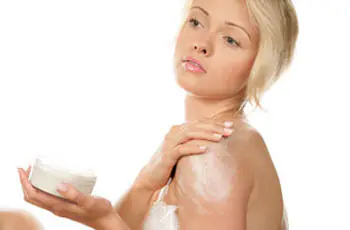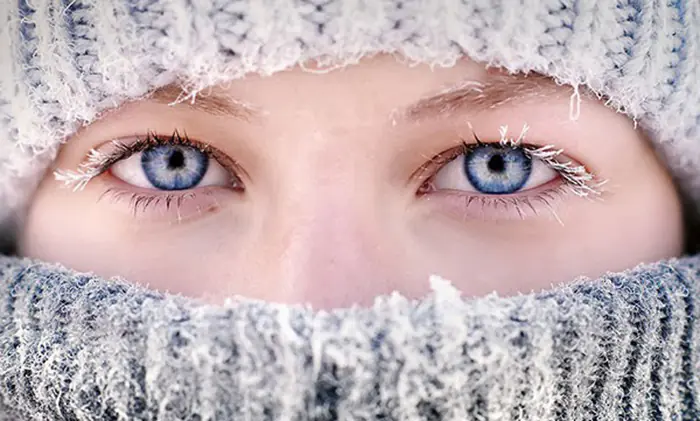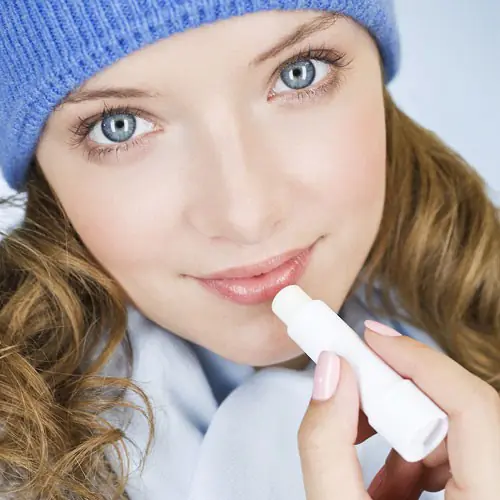Dry body skin is a rather unpleasant and common problem that causes discomfort. Dry skin can be a congenital phenomenon, or it can manifest itself throughout life as a result of exposure to certain factors. In addition to dryness and dullness, red, flaky areas may appear on the skin of the body, and in general it loses firmness and elasticity, ages quickly and looks rather unsightly. In addition, excessively dry skin is always accompanied by severe itching. What to do with dry body skin?

In normal skin, the sebaceous and sweat glands, during their interaction, form a thin film on the surface of the skin, which protects the epidermis from negative external influences (temperature changes, excessive and frequent exposure to hot water, etc.). This process can be disrupted under the influence of certain factors, resulting in dehydration, loss of firmness and elasticity, and dry skin.
Dry skin (xerosis) is mainly a temporary phenomenon and appears due to any reason; the period of exacerbation is most often observed in winter. However, dry skin can be bothersome and cause a lot of inconvenience throughout your life. This problem extends to the abdomen, arms, and lower limbs. But such distribution is very conditional.
Changing lifestyle, nutrition, and active skin care help get rid of dry skin on the body.
Causes of dry body skin.
In addition to the genetic factor, many others are to blame for the appearance of dry body skin, in particular:
- Hormonal imbalances.
- Dry air (heating in winter, air conditioning in summer).
- A hot shower or hot bath dries out the skin and deprives it of its protective fat film.
- Insufficient consumption of clean water leads to its deficiency in the body, and, as a result, to dehydration of the epidermis.
- Climate.
- Unbalanced and unhealthy diet, long-term strict diets.
- Bad habits (smoking, drinking carbonated drinks, including sweet ones, coffee, tea in large quantities).
- Prolonged exposure to the open sun (tanning, solarium).
- Skin diseases disrupt the production of ceramides responsible for water balance (psoriasis, eczema, keratosis, diabetes, atopic dermatitis, ichthyosis, allergies).
- Genetic predisposition.
- Using soap (it dries out the skin).
- Too frequent use of aggressive cosmetics to cleanse and exfoliate the skin (scrubs), or a complete lack of this procedure in care.
- Metabolic disease.
- Lack of vitamins in the body (especially E and A), as well as hypovitaminosis.
- Long-term treatment with antibiotics (after such therapy, a course of vitamins and stomach treatment are required, which will have a positive effect on the skin).
- Frequent stress.
In cosmetology, there are two types of dry skin:
- The presence of good tone, when the skin is sensitive to irritants, sometimes unpleasant itching is observed, while the skin has not lost its elasticity, is smooth and matte without deep and numerous wrinkles. Often observed at a young age, regular and careful care is required, and protection from ultraviolet radiation is mandatory.
- Dry skin with reduced tone is characterized by very thin skin around the eyes and in the area of the nasolabial fold, and wrinkles form intensively. Conventional cosmetics are useless in care; deeper procedures are required.
Determining which type you are is quite simple; you just need to apply a little pressure on the skin with your fingertips. With a quick recovery (smoothed out), you have nothing to fear.
Treatment of dry body skin.
If dry skin appears against the backdrop of a change in climatic temperature, as a result of prolonged tanning and stays in a solarium, or dry indoor air, then in such cases it is necessary to limit or completely stop sunbathing, use air humidifiers in the apartment, or at work.
Be sure to moisturize your body skin twice a day every day.
If the problem of dryness and itching of the skin has arisen due to your active weight loss or insufficient drinking during the day, it is recommended to maintain a drinking regime, drinking at least one and a half liters of clean drinking water per day. Remember, strict diets lead to a deficiency of proteins and microelements in the body, and weight loss drugs remove excess fluid from the body. Hence, the skin loses tone, elasticity and firmness, and ages faster.
In women, a similar problem during menopause is solved by prescribing hormone replacement therapy.
In general, dry skin can occur as a sign of very serious diseases, so if dry skin is accompanied by redness, itching, insomnia, the appearance of ulcers or wide areas of peeling on the skin, you should not hesitate and consult a specialist. Only after a complete examination and tests, specialists (allergist, cosmetologist and dermatologist) will be able to identify the cause of dry epidermis and prescribe optimal treatment.
It is important to give up bad habits, improve your diet, you need to eat more foods that contain a lot of vitamin E (fatty fish and seafood, high-fat dairy products, nuts, vegetable oils, legumes, spinach and broccoli).
With this problem, it is recommended to avoid hot baths. Preference should be given to a warm shower or bath and no more than fifteen minutes, in order to avoid degreasing the skin. As hygiene products, it is advisable to choose cream-based shower gels or liquid soaps, which contain many ingredients with moisturizing properties. It is advisable to use such products no more than once every seven days.
Basic rules for caring for dry skin.
Caring for excessively dry body skin should be regular and include gentle exfoliation (peeling and scrub no more than once a week) and moisturizing (cosmetic oils, milk, lotion, body cream) immediately after hygiene procedures and at night. By the way, if your skin is dry after water procedures, you do not need to dry it with a towel, but only pat it lightly so that some moisture remains. After this, it is advisable to apply cosmetic oil to the body; it is an excellent strong moisturizer and perfectly retains moisture in the tissues. And before going to bed, you can use a lotion with a high content of ceramides, phospholipids and fatty acids.
Be sure to use protective cosmetics at any time of the year.
Since dry skin is very sensitive to various irritants, it is accordingly advisable to give preference to clothing made exclusively from natural, breathable fabrics (except wool), and to exclude synthetics, guipure, etc. It is important to choose the right clothes that suit the season.
For severe itching, cold compresses help, and hydrocortisone ointments or creams reduce inflammation.
Moisturizing body masks, which should be done twice a week, and baths with herbal infusions are very good for the skin. Such procedures will not only moisturize, soothe and cleanse the skin, but will also stimulate its regeneration.
Dry body skin, treatment with folk remedies.
Bath recipes.
Add a decoction of flaxseed (five teaspoons per liter of water, simmer for fifteen minutes, leave, strain) and chamomile (recipe on the back of the package) to a bath of warm water. Add decoctions to water. The duration of the procedure should be no more than fifteen minutes.
A glycerin bath is ideal for restoring dry skin. Add half a glass of medical glycerin in liquid form (sold at the pharmacy) to a bath of warm water.
Heat a liter of milk, but do not boil. Dilute 200 g of honey in a water bath. Gradually combine honey and milk, add two teaspoons of almond oil and pour into the bath.
Wrap three tablespoons of oatmeal in a gauze bag and tie. This bag must be secured to the bathroom faucet so that when opened, water flows through the oatmeal. Take a bath in this water for fifteen minutes.
Peeling recipes.
Combine four tablespoons of honey (preferably in liquid form, or melted) and a tablespoon of salt, add a tablespoon of any vegetable oil (linseed, olive, etc.) and stir thoroughly. Apply the composition with light massaging movements onto the skin of the body, leave for five minutes, and rinse.
Mix a tablespoon of oatmeal and almonds, grind everything using a coffee grinder. Next, mix the mixture with two tablespoons of sour cream. After taking a shower, apply the mixture to the skin and rinse off after five minutes. Dry the skin with a towel (lightly) and moisturize the skin.
Recipes for moisturizing body masks.
After taking a shower or warm bath, it is recommended to apply a mixture of two tablespoons of honey (preheat in a water bath) and the same amount of olive oil on the body. Leave the mixture for twenty minutes, then rinse off. This mask, in addition to nutrition, removes toxins.
Combine a glass of mineral water with 50 ml of milk. This mixture must be rubbed on the body for twenty minutes, then rinsed off. The procedure promotes collagen production.
Grind the pulp of one avocado, add the pulp of chopped banana to it. Add half a glass of cream, 100 grams of butter into the mixture and at the end add a couple of drops of rose oil. Whisk everything, apply to the body after taking a bath and leave for fifteen minutes, then rinse with a washcloth. This mask not only nourishes, but also effectively cleanses the skin.
It is useful to moisturize your skin with natural products after bathing. For example, moisten a cosmetic napkin (large) in milk (you can use aloe juice, kefir) and apply to the body. The duration of the procedure is fifteen minutes.
To deeply nourish the skin of the body, a mask made from an oil solution of vitamin E and water is recommended (the vitamin can be replaced with peach, apricot, almond oil, and avocado oil).
If you have tried all of the above methods and there is no improvement, but, on the contrary, the condition has worsened, consult a doctor.
Beautiful winter days can be ruined for each of us by an unpleasant feeling of tightness in the face. This feeling is even stronger thanks to the warm woolen clothes that people wear during the cold season. Why does the skin dry out in winter? How to help your face and body? 
Why does my skin peel in winter?
First of all, we’ll talk about “seasonal” reasons, and then we’ll move on to those that can operate throughout the year:
- The burning winter wind and frosty weather can dry out the surface of the face and hands to such an extent that they turn red, begin to crack and peel.
- The central heating system in apartments dries the air to a state “like in the desert.” In addition, many people additionally heat their homes using heating appliances. All of them contribute to the evaporation of moisture from the air. You've probably noticed that in winter the skin of the body is very dry, even for those who rarely leave the house.
- On frosty days, you especially often want to take a hot bath and soak in it. Hot water, especially chlorinated water, negatively affects the surface tissues of the entire body. Why does my skin peel in winter? It's drying up.
- During the cold season, many people forget about vitamins; they consume fruits and fresh vegetables only sporadically. A face lacking vitamins and microelements fades and dries.
- If in summer a person willingly drinks fresh water and juices, then in winter hot tea and coffee become his usual drinks. The skin lacks internal moisture.
Some bad habits “get worse” during the cold season. For example, alcohol consumption increases. Long holiday days and the desire to warm up in the evenings lead to hot mulled wine, tea with rum, and cognac appearing on people's tables. Alcoholic drinks and smoking are the leading causes of dry skin.
Illness and advanced age make the situation worse:
- Natural processes also deprive the body of moisture: aging, approaching menopause. This requires drug therapy;
- a number of diseases, such as diabetes mellitus, metabolic disorders, can affect the condition of the face and body;
- Incorrectly selected or low-quality cosmetics can not only disrupt the water balance, but also cause allergies.
In winter, you should protect your face and hands before going outside, maintain indoor humidity, eat foods rich in vitamins, and avoid bad habits.
Moisturizing skin in winter
What measures can be taken to ensure that the skin of the face and body feels comfortable in winter? How to moisturize your facial skin in winter?
- it is necessary to saturate the air in the room with moisture. Ventilate rooms regularly. You can purchase special devices that spray liquid. The simplest option is to cover the batteries with a thick cloth soaked in water: bedspreads and large towels are suitable for this;
- buy filters. Water free of chlorine and impurities should be used not only for drinking, but also for washing. If there are no filters, it is recommended to settle the water for washing. Hard - can be softened with soda;
- make sure your nutrition is complete. Tablets that include a vitamin-mineral complex should be taken regularly. In the store it is better to buy a couple of kilograms of apples or tangerines than a stick of sausage. Don't forget about dairy products. Cottage cheese, kefir, fermented baked milk - will give the body the necessary fats, the skin will receive the substances it needs;
- think about your drinking regime. In winter, clean water should be consumed in the same quantity as in summer: 1.5-2 liters per day. It is advisable to replace black tea with green tea. The juicer should become the housewife's first assistant. The same carrot juice is quite inexpensive, but it has a wonderful effect on the condition of the skin. You can mix apple, beet, orange and other juices with carrot juice to make delicious and healthy cocktails;
- try to limit bad habits. Alcoholic drinks are acceptable: high-quality red wine and fresh beer in reasonable quantities;
- moisturizing facial skin in winter has its own characteristics. Choose a line of professional face and body care products, and choose the one that suits you. As a rule, creams, lotions, and tonics of the same line complement each other, providing the skin with everything it needs. It is not necessary to focus only on well-known Western brands. Inexpensive domestic brands “Black Pearl”, “Clean Line”, “100 Beauty Recipes” have also proven themselves well. Remember that in winter you should avoid scrubs and peels. Very dry skin in winter cannot tolerate their use;
- The winter sun, oddly enough, is very bright. Use creams with UV filters. Don't forget about hygienic lipstick and hand cream.
To keep dry skin in good condition in winter, wash your face with filtered water. Regularly use products from a cosmetic line that suits you. Don't forget to drink enough clean water and freshly squeezed juices. The cold sometimes causes the skin on your face to peel desperately. Before going outside, apply a rich cream to it.

How to moisturize your skin in winter at home
You need to know how to moisturize your facial skin in winter, using the products that are always on hand. Traditional medicine recipes can provide invaluable support in winter: masks, baths with herbal decoctions, mixtures with essential oils. Moisturizing even very dry facial skin with their help will give excellent results.
- Mix a spoonful of olive or flaxseed oil and a spoonful of honey. Apply an even layer on your face and lie with this mask for 10-15 minutes.
- Before washing, wipe your forehead and cheeks with the following mixture: whole milk, mixed in equal proportions with still mineral water. You can use, for example, half a glass of both. Apply this mixture to your face using a cotton swab. When you feel it starting to dry out, wash your face with water softened with soda.
- A wonderful “tropical” mask can be made from a ripe banana. Mash a piece of fresh fruit, add a couple of tablespoons of cream. Apply to face and neck for 15-20 minutes.
- Dry skin itches in winter. How can I help her? Whole milk can also be used for compresses to relieve itching. Soak a clean linen napkin in it and place it on your face for a quarter of an hour.
- “Enrich” the night cream by adding oils to it, which are sold in any pharmacy. Use your choice: almond, peach, jojoba.
- How to moisturize your body skin in winter? While taking baths, add herbal decoctions to the water - string, oregano, linden, rose petals. The bath should not be too hot. Immediately after bathing, use a body moisturizer.
- Don't forget about your hands. Try not to walk down the street without mittens or gloves. At home, massage your hands with oils such as almond oil 1-2 times a week. At night, a nourishing face cream can be applied to your hands.

While taking baths, add herbal decoctions to the water. Make moisturizing and nourishing masks using whole milk, honey, banana. A massage using almond oil will have a wonderful effect on dry skin on your hands.
If your child has dry skin in winter
Many parents are concerned about the fact that in winter and in children, the skin can become dry and red.
Older kids can spend hours outside on winter days: playing snowballs, going downhill, going to the skating rink, or taking their skis to the park. And then fathers and mothers notice that the skin on their child’s hands is chapped, and a strange “blush” does not leave his cheeks. In the cold, the skin cracks and the lips become chapped. Teenagers themselves are worried - what to do?
And even very young children face this seasonal problem during the winter months.
A child has dry skin in winter - how to help him?
- As for kids, first of all, make sure they have enough to drink;
- make indoor air humid. If you use air heaters, install humidifiers on them - attach small containers of water to the radiators, which will gradually evaporate. Don't forget about ventilation;
- include juices and fruits in your child’s diet;
- use moisturizing oils recommended by your pediatrician;
- do not bathe your baby in too hot water;
- if the child is older, make sure that he uses hygienic lipstick before going outside. You can apply nourishing cream to your face;
- do not allow children to go outside without gloves or mittens;
- buy a good vitamin and mineral complex for children.

To protect the surface of the child’s body from drying out in winter, humidify the indoor air. Buy special baby moisturizing oils and hygienic lipstick.
Conclusion
It’s not for nothing that they say: “Summer is for the soul, winter is for health.” Considering that in our country there is snow for at least 4-5 months a year, Russians simply must have good health. Dry skin in winter is not a death sentence; with proper care, it will look great. There is no point in wasting nice days by spending them indoors. Use professional and folk remedies that moisturize and nourish the surface of the face and body, drink enough liquid - and remain beautiful, regardless of the time of year.
Winter is a time of real testing not only for us, but also for our skin. Regardless of the type, it can face a number of problems such as dryness, tightness, discomfort and even irritation. We will tell you how to minimize threats in this article.
- Symptoms of dry skin on the face and body
- External causes of dry skin in winter
- Internal causes of dry skin in winter
- Preventing dry skin in winter
- Review of dry skin care products during the winter season
- Express methods for eliminating severe dry skin
Symptoms of dry skin on the face and body
In winter, you constantly want to moisturize your skin, it is so dry. © Getty Images
Dry skin is skin that lacks moisture and lipids (fats). Externally, this deficiency manifests itself in different ways: the skin becomes uneven, wrinkled, rough, itching and cracks may appear.
Just in case, let us remind you that dry skin in winter can be caused by several reasons:
operation of heating devices at home and in the office;
lack of proper care.
When faced with dryness, the skin immediately sends a signal.
The skin of your hands becomes rough in winter; you constantly want to apply a moisturizing (or nourishing) cream to it.
The skin of the face tightens not only after washing, but also after walking outside.
As for the skin of the body, after a shower there is no way to do without a nourishing lotion, because otherwise peeling on the shins and elbows cannot be avoided.
The most common signs that your skin has become dry are:
decreased tone and turgor;
External causes of dry skin in winter
One of the reasons for dry skin on the face and body in winter is too hot water in the shower. © Getty Images
You just need to accept it as a fact that in winter our skin needs hydration more than at any other time of the year. Not only dry indoor air and the temperature difference between indoors and outdoors are to blame for this. Here are some more reasons.
Hot water
In winter, it only aggravates the already stressful situation for our epidermis. When washing with hot water, the blood vessels dilate, the skin turns red, its turgor decreases, and the skin barrier is damaged.
Cloth
We are talking primarily about the habit of hiding your face in a scarf. Its villi, when in contact with the face, physically irritate the nerve fibers of the skin - and hello, a feeling of dryness.
Dry indoor air
A good humidifier will help correct the situation a little, although you shouldn’t count on it 100%. It is much more important to maintain a drinking regime: your helpers are clean water, green tea, and mineral water.
Incorrectly selected cosmetics
Many believe that in winter you should definitely replace your moisturizer with a nourishing and/or protective one. Of course, the skin needs protection, but only immediately before a walk. But as a basic care, you need to continue to apply your usual moisturizer. It will help retain moisture, which the skin already lacks in winter.
Excessive cleansing
Dermatologists suggest keeping your relationship with water to a minimum during the cold season. No, of course you need to wash your face. But without fanaticism. Cleansing in the morning and evening, intensive cleansing - if necessary, but not more than 1-2 times a week. Washing your face “to the point of squeaking” disrupts the pH of the skin.
At a time when the skin is sorely lacking moisture and its own lipids (and they play a huge role in strengthening its protective barrier), we simply must help it in every possible way and means.
Internal causes of dry skin in winter
Dry skin is caused not only by external causes (weather conditions), but also by internal ones. Let's consider the most basic factors.
Poor nutrition. The condition of our skin largely depends on what we eat. During the winter, when your skin is prone to dehydration, eating healthy fats along with moisturizer will help keep your skin feeling comfortable despite the weather. Proper nutrition and care products have a complementary effect, helping to maintain beauty and health.
Lack of vitamins. Sometimes dry skin occurs due to a deficiency of vitamins important for the body. For example, dryness and cracks indicate a lack of vitamins A, PP, group B. We have already written about this in great detail here.
Hormonal imbalance. Fluctuating hormone levels also cause dry skin. An endocrinologist will give you more accurate information. Usually, after the first consultation, the specialist prescribes a number of tests, including a hormone test.
Hereditary predisposition. If your immediate family suffers from dry skin, then you most likely know about this problem firsthand. In this case, regular (daily) competent care will help.
General dehydration of the body. Lack of moisture always leads to dry skin. At any time of the year, but especially in winter. Therefore, calculate your daily fluid intake (30 ml per 1 kg of weight) and try to follow the drinking regime.
Causes of dry skin in children
Causes of dry skin in pregnant women
Pregnant women also sometimes complain of increased dry skin. This is due to hormonal changes in the body. Usually, thick, fatty nourishing creams, oils and body balms save the situation.
Preventing dry skin in winter
In winter, you need to strengthen your diet with vegetables, nuts, and fatty fish. © Getty Images
How to deal with flaking and dry skin in winter? This question is asked by millions of women and men around the world. It's quite simple. Here are the main recommendations.
Drink more water. You can try downloading a special application to your smartphone that will remind you every half hour to take a few sips of water. Remember the daily norm is approximately 30 ml of liquid for every kilogram of your own weight.
Add more foods rich in unsaturated fatty acids to your winter diet: fatty sea fish, cod liver, avocado. In addition, the body really needs vitamin C: it is found in all citrus fruits, kiwi, and blueberries. Look for vitamins A and E, also called beauty vitamins, in dairy products and spinach. For healthy skin, zinc is needed; beef liver contains a lot of it.
Eat at least five servings of vegetables and fruits rich in vitamins and fiber every day.
Avoid taking too hot showers and baths. It is best to finish any water treatments with a contrast shower. Keep in mind: the word “contrast” in this case does not mean an extreme temperature difference, but an alternation of warm and slightly cool water.
Apply moisturizing and/or nourishing cream or body lotion. Be sure to apply it to still damp skin to “seal in” the moisture.
You can install a humidifier in the bedroom and run it throughout the night.
Never stop using facial moisturizer. The ideal time to apply it is 40–60 minutes before going outside. You can add a couple of drops of cosmetic oil to the cream - this will make its texture more pleasant and better accepted by the skin.
In extreme cold, use additional protective cream. So that it has time to form a film on the skin that protects from frost and wind, apply the product at least 30 minutes before leaving the house.
Review of dry skin care products during the winter season
To strengthen and protect the skin barrier, we advise you to always have powerful moisturizing, restorative and protective products on hand for both the face and body.
For face
Antarcticin, which is part of this product, helps maintain optimal moisture levels. This substance is a glycoprotein of a microorganism that has the super ability to survive at very low temperatures and therefore provides the skin with protection even under unfavorable temperature conditions.
The effect of the cream is due to the combined effect of the three most important skin lipids - ceramides, cholesterol and fatty acids in a high concentration of 2:4:2.
For body
The balm is based on Aqua Posae Filiformis, an active component that regulates the natural microflora of the skin. Combined with soothing niacinamide and nourishing shea butter, it restores and strengthens the skin's lipid barrier.
Restores and strengthens the skin barrier. To understand why it works, just look at the composition: the product contains a complex of essential ceramides.
Express methods for eliminating severe dry skin
When you come home from the street and your skin is either burning from the cold or tight, you really want to quickly put it in order and provide a feeling of comfort. Here are some recipes.
Homemade masks
Mask with boiled potatoes will help moisturize and soften the skin. Boil a couple of potatoes and mash them in a bowl, stir with 2 tablespoons of heavy cream. Apply the warm mixture in a thick layer onto cleansed skin. Leave until the potatoes cool completely. Then rinse and apply a nourishing or moisturizing cream.
Honey perfectly restores reactive and dry skin. Mix 2 tablespoons of honey with 2 tablespoons of milk and heat gently in the microwave. Apply the mask to your face and lie down for 10-15 minutes. Then rinse with warm water and be sure to apply moisturizer.
Massage
Massage, or rather self-massage, also helps restore the skin. And here the main rule is neat, light movements, without effort or pressure. Before starting the procedure, apply cream or cosmetic oil. Perform movements along the massage lines extremely delicately, without stretching the skin.
Vitamin-mineral complex
To support your skin during the cold season, you can take a course of a vitamin-mineral complex. This, of course, is not exactly an express method, since the missing vitamins and minerals will “reach” the skin last, first providing other vital organs with the necessary substances.
The only thing we do not recommend is prescribing vitamins yourself. First, consult your doctor and get tested. Based on their results, the specialist will select the optimal complex that meets your needs.



